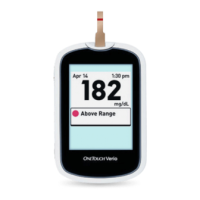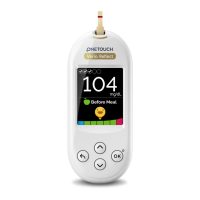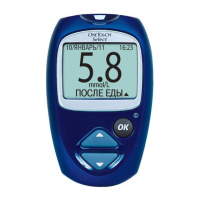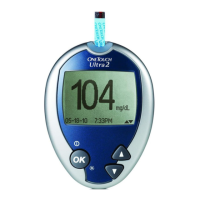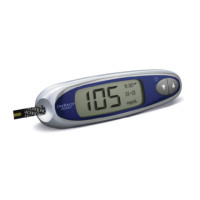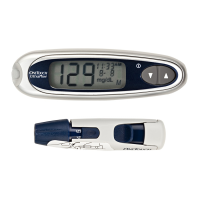11
TESTING YOUR BLOOD GLUCOSE
CAUTION: Do not test on your forearm or palm when:
• You think your blood glucose is rapidly falling, such as within two hours of exercise or a rapid-acting insulin injection
or insulin pump bolus. Testing with a ngertip sample may identify hypoglycaemia or an insulin reaction sooner than
testing with a forearm or palm sample.
• It has been less than two hours after a meal, a rapid-acting insulin injection or insulin pump bolus, physical exercise, or
you think your glucose level is changing rapidly.
• You are ill or during times of stress.
• You are concerned about the possibility of hypoglycaemia or an insulin reaction, such as when driving a car. This is
especially important if you suer from hypoglycaemia unawareness (lack of symptoms to indicate an insulin reaction).
Forearm Palm
Getting a blood sample
Getting a blood sample from your forearm or palm is dierent than getting a sample from your ngertips. Follow these
instructions to get a sucient blood drop for testing.
Before testing, make sure to wash the puncture site with soap and water. Rinse and dry thoroughly.
The clear cap is for forearm and palm sampling only. Replace the blue cap with the clear cap.
Insert a lancet and snap on clear cap
Carefully insert a new, sterile lancet. Snap on the clear cap.
Adjust the depth setting
You may need a deeper setting to get a sucient sample for testing.
Twist the cap to increase the depth.
Be sure to cock the lancing device.
Choose a sample site
• Choose a spot away from bone, veins, and hair.
Massage the site to increase blood ow.
• Select a spot with no visible veins and avoid deep
lines, which may cause your blood sample to smear.
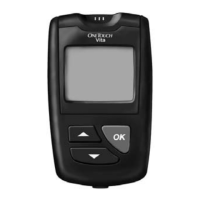
